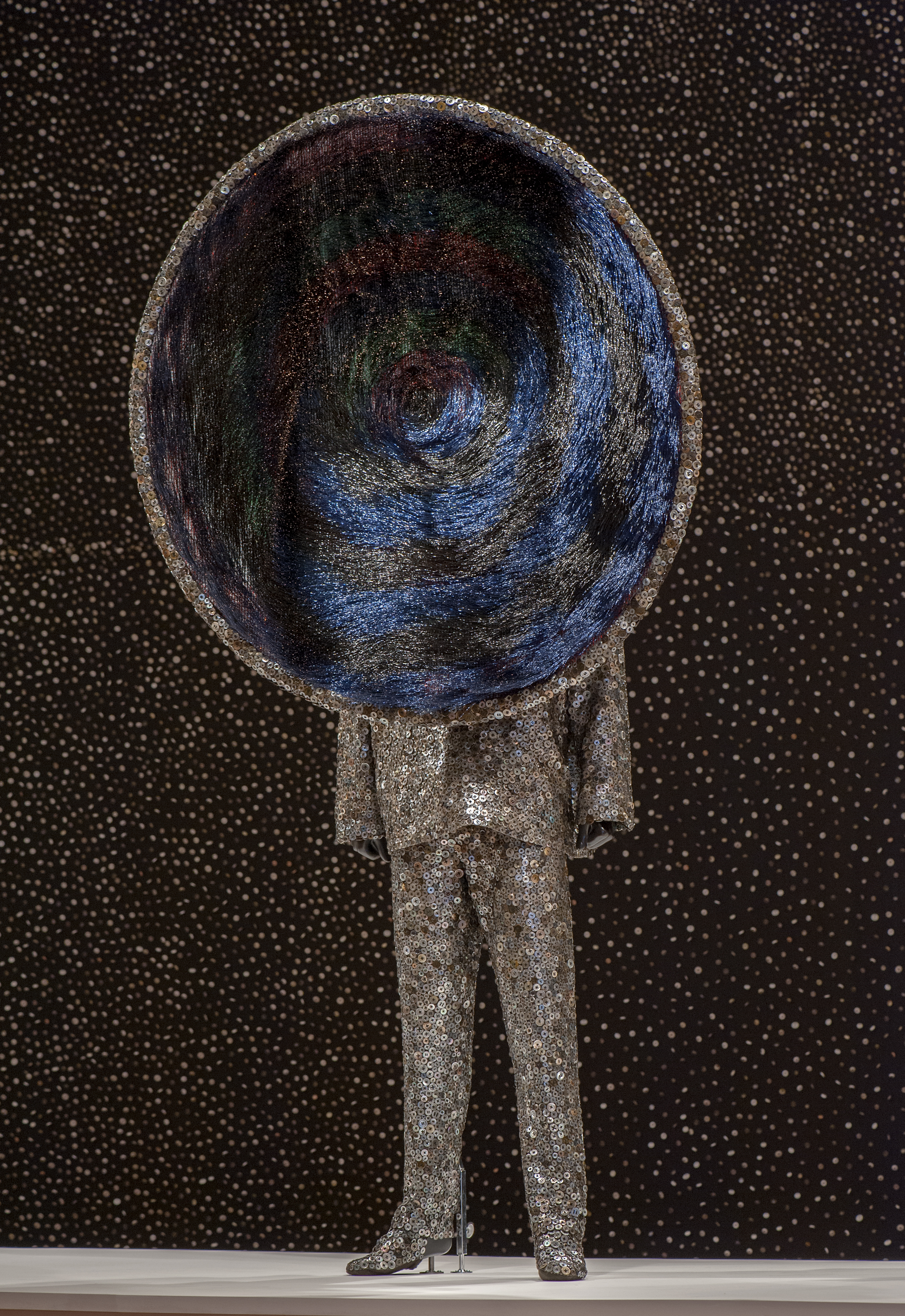Nick Cave
(Fulton, Missouri, 1959 - )
Soundsuit
2018
Mixed media including buttons, wire, bugle beads, metal and mannequin
91 x 51 x 22 in. (231.1 x 129.5 x 55.9 cm)
Collection of the Akron Art Museum
Purchased with funds from Dedee and Rory O'Neil and the Museum Acquistion Fund
2019.2
© Nick Cave. Courtesy of the artist and Jack Shainman Gallery, New York.
More Information
Nick Cave’s soundsuits are part of an expansive, ongoing body of work in which commonplace items such as buttons, plastic hair-beads, domestic textiles, and vintage toys are upcycled into elaborate assemblages based on the artist’s own body. The wearable sculptures—visually related to Mardi Gras Indian costumes, African ceremonial attire and Tibetan folk attire—illustrate how Cave’s practice straddles the visual and performing arts. The first soundsuit was made shortly after the police officers who beat Rodney King were acquitted, when the artist “started thinking about myself more and more as a black man—as someone who was discarded, devalued, viewed as ‘less than.’” One afternoon, he began to gather twigs and sticks scattered around a Chicago park, eventually weaving them into a protective suit of armor. Cave saw that the second skin simultaneously masked his race, gender and class while boldly expressing another identity. The rustling noise generated as he walked around in it also became a mode of and metaphor for defiance. The now five-hundred-plus specimens in the series have become a collective army of resistance to profiling and violence, responding not only to police brutality but any crime motivated by hate. This particular soundsuit, which is being offered to AAM from the artist’s collection after an inquiry into its availability, encapsulates and distills the primary impetus behind the birth of the soundsuit—countering the devaluing of and violence toward black men in our society. The soundsuit takes on the form of a gramophone or tuba, with a large, flat circular screen as the face. The screen is threaded with a layer of a blue and black copper-tipped wire applied in a target pattern, which is superimposed on a target pattern of red, black and green beads representing the pan-African flag. The artist identifies the blue and black target pattern with the fraught interconnection between gun violence and race, and in particular the deaths of African-Americans at the hands of law enforcement officers. States Cave, “I was thinking about (black) youth crime in Chicago. I’m living in a city where violence is extreme, yet voices aren’t being heard.” The circular form of the face mimics the tondo, which Cave has utilized for several years as a cosmic form that holds energy and power. Most recently, he has created tondos that are faced with copper-tipped wire, which he uses to replicate cataclysmic weather patterns that he superimposes on brain scans—depicted with beads—of young black teens who have been exposed to gun violence. The face of the soundsuit acts a screen through which the wearer can see, yet it is opaque from the outside. Information, data and energy can theoretically pass back and forth through this screen. The body of the soundsuit is comprised of thousands of grey mother of pearl buttons, which the artist describes as tiny pieces of armor. This soundsuit is devoid of the colorful decorative found objects or textiles that adorn many of Cave’s other soundsuits. It is a more sober, yet equally dramatic and stunning, expression of Cave’s desire to shield himself and others from discrimination, racial profiling and the violence that continues to ensue from those forces.

